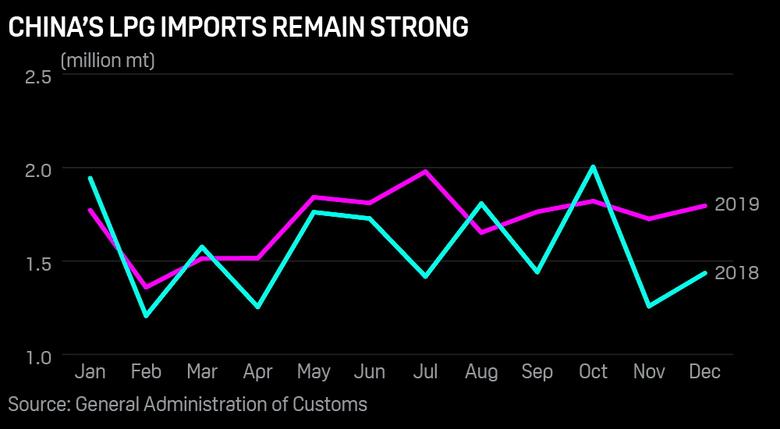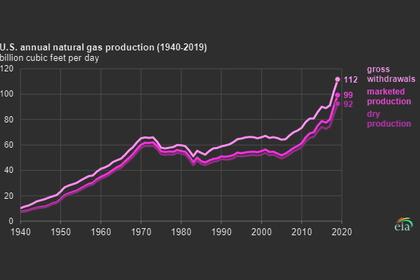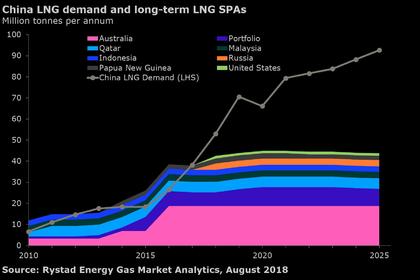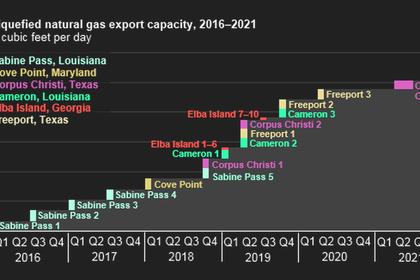
U.S. LPG TO CHINA

PLATTS - 13 Mar 2020 - The resumption of US LPG imports into China post the tariff exemption granted by the Chinese government last week will not hamper the flow of other Western cargoes, including those from Canada, into the region, industry sources said this week.
Last week, the Chinese government approved tariff exemptions for many propane dehydrogenation plant operators, including Wanhua Chemical and Oriental Energy, as well as retail distributors like CNOOC and ChinaGas, for importing US LPG cargoes for March and April delivery, after an 18-month hiatus, traders told S&P Global Platts.
The US was the second biggest LPG supplier to China in 2017 at 3.54 million mt, comprising 3.37 million mt of propane and 162,668 mt of butane. The volume dropped 54% a year later in 2018 to 1.62 million mt as a result of trade tensions between the two economies, and in 2019 only 2,443 mt of US propane was imported into China, customs data showed.
To help alleviate the loss of US flows, other suppliers from Australia and Canada have been shipping LPG cargoes to Asia -- an estimated 50 shipments -- over the last two years, traders said.
Most of the new supply was shipped to China, which together with West African and Mediterranean LPG, helped fill the gap created by the US-China trade tensions that led to restrictive import tariffs.
CANADA'S ALTAGAS
Canada's Altagas, which has issued spot tenders from time to time since 2017, recently sold 44,000 mt of propane for loading over April 11-15 to a trader, market sources said.
In total, Canada exported 460,745 mt, or approximately ten 44,000 mt propane cargoes to the Far East in 2019, customs data showed, of which 182,532 mt or roughly four cargoes landed in China.
Last year, five of Altagas' cargoes were shipped to Japan on a term basis, which is not surprising given that Astomos, Japan's largest LPG supplier, had signed in 2017 a multi-year term purchase agreement with Altagas to offtake 50% of Ridley Island's propane output.
The remaining five cargoes from Altagas were sold on a spot basis via tenders and Chinese importers has been aggressively bidding for these cargoes, edging out competition from Japan and South Korea, trade sources said. The Chinese were generally willing to pay a higher premium, outbidding competitors, as restrictive tariffs meant that the US was no longer a viable alternative source of supply outside the Arabian Gulf. The last spot cargo was imported by South Korea in June 2019.
While these import restrictions from the US have now been relaxed, traders, however, do not expect this to hamper Canadian LPG flowing into China.
"The tariff exemptions roll every month and so it will depend on market fundamentals that month and the distance to the Far East from the port of loading," a China-based importer said.
Moreover the Panama Canal Authority, or ACP, announced in January a new freshwater fixed fee of $10,000 for ships over 38.1 meters. The fee affects all tankers, dry bulk carriers, container ships and LPG ships, and is effective February 15.
Market sources expect Very Large Gas Carriers to continue to use the Panama Canal, but foresee that the largest impact would likely be felt when canceling a booking, or a reserved canal transit slot, as the freshwater fee will not be refunded.
"It [Canada to China] is still better than going through the Panama canal, " a China-based trader said.
Altagas loads from Ridley Island terminal in British Colombia, Western Canada, and ships sailing to the Far East from Altagas would not have to go through the Panama canal.
Outside of Japan and South Korea, China is unlikely to face much competition for Canadian volumes, as longer voyages to Southeast Asia and India make such trade flows uneconomical for traders. In addition, countries such as India and Indonesia use LPG predominantly for combustion in the residential sector, and have traditionally preferred to buy evenly split, or 33:11 split cargoes from Middle Eastern suppliers, rather than full propane cargoes from the US or Canada due to the higher calorific value of butane.
However, one major concern lingers over regular Chinese imports of Canadian propane going forward.
More than one trader familiar with the quality of the cargo have told Platts that the methanol content in Altagas' propane cargoes is found to be much higher than the 50 ppm restriction required by most Chinese PDH plants, making it unsuitable to be imported as feedstock for propane dehydrogenation.
As such, it is likely that while domestic distributors such as ChinaGas and Oriental Energy continue to bring in volumes from Canada going forward, especially when there is an opportunistic arbitrage window open, these will end up in the residential sector. The Chinese PDH plants will have to look elsewhere, at least for the time being.
-----
Earlier:















